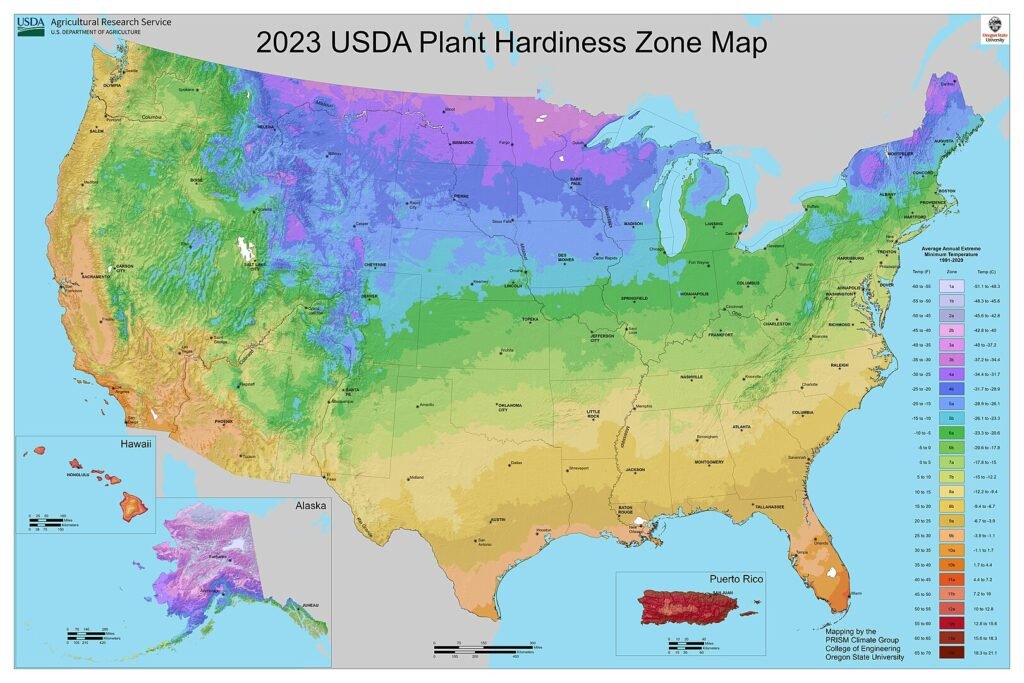If you’re researching plants for your garden, they were probably labeled with their USDA plant hardiness zones. But what are plant hardiness zones and why are they important to us as gardeners? This article will explain everything you need to know about plant hardiness zones!
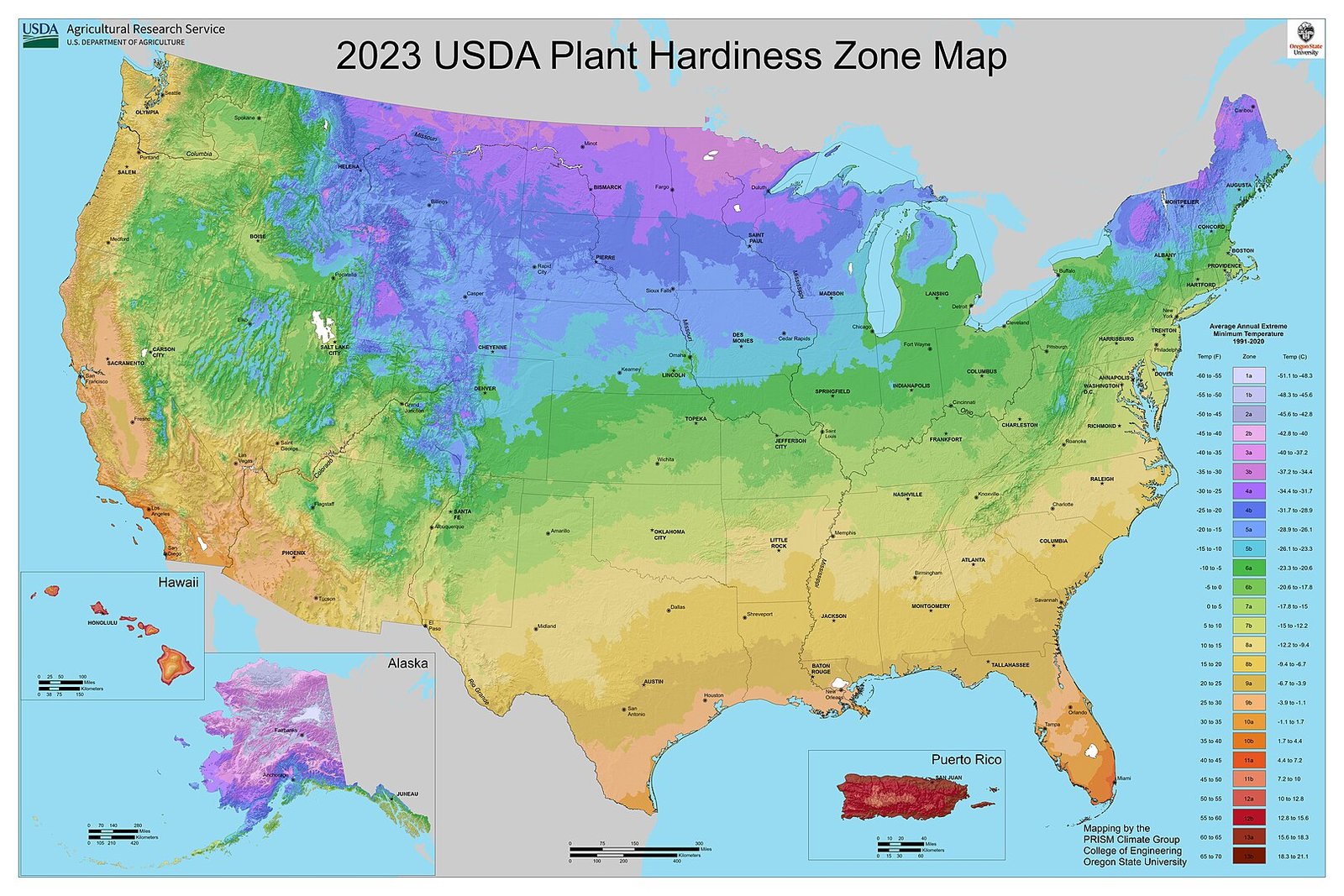
USDA Plant Hardiness Zones: A Gardener’s Guide
What Are the USDA Plant Hardiness Zones?
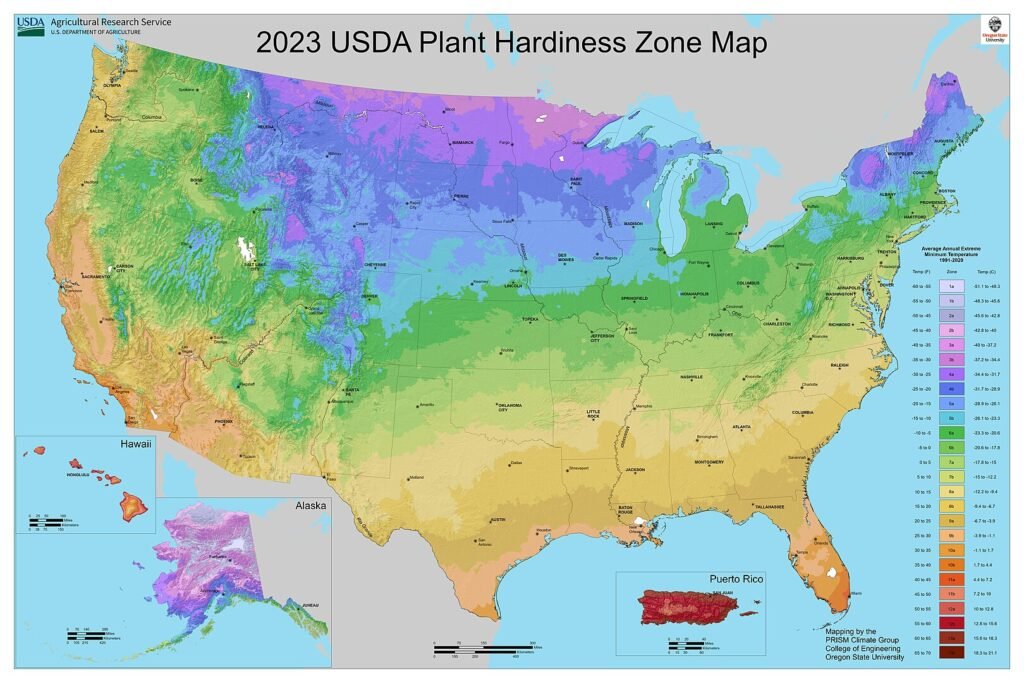
Simply put, the United States Department of Agriculture (USDA) plant hardiness zones, also called “growing zones”, are geographic regions defined by their average lowest temperature. A location’s growing zone is calculated by looking at the lowest temperature each year for the last thirty years, and calculating an average of these lows. The most recent USDA plant hardiness zone map is based on the temperatures from 1991-2020.
Based on these average low temperatures, each region is placed in one of thirteen zones (1-13), representing a range of 10°F. Each of those zones is also split in two (a/b), representing a range of 5°F.
The Zone Temperatures
See the list below for the temperature range of each zone. Zone 1 includes temperatures for 1a and 1b as an example. Each of the others also has a colder “a” zone and warmer “b” zone which have been excluded for succinctness.
- Zone 1: between -60°F and -50°F. (1a between -60°F and -55°F, 1b between -55°F and -50°F)
- Zone 2: between -50°F and -40°F.
- Zone 3: between -40°F and -30°F.
- Zone 4: between -30°F and -20°F.
- Zone 5: between -20°F and -10°F.
- Zone 6: between -10°F and 0°F.
- Zone 7: between 0°F and 10°F.
- Zone 8: between 10°F and 20°F.
- Zone 9: between 20°F and 30°F.
- Zone 10: between 30°F and 40°F.
- Zone 11: between 40°F and 50°F.
- Zone 12: between 50°F and 60°F.
- Zone 13: between 60°F and 70°F.
Because plant hardiness zones are calculated from an average of the last 30 years, your hardiness zone can actually change over time! Between the release of the 1990 and 2006 maps, more than 50% of the United States moved up half a zone! This means that the average low temperature of most of the country increased by around 5°F in the span of 16 years! A similar increase occurred between the release of the 2006 and 2023 maps.
Why Is My Growing Zone Important?
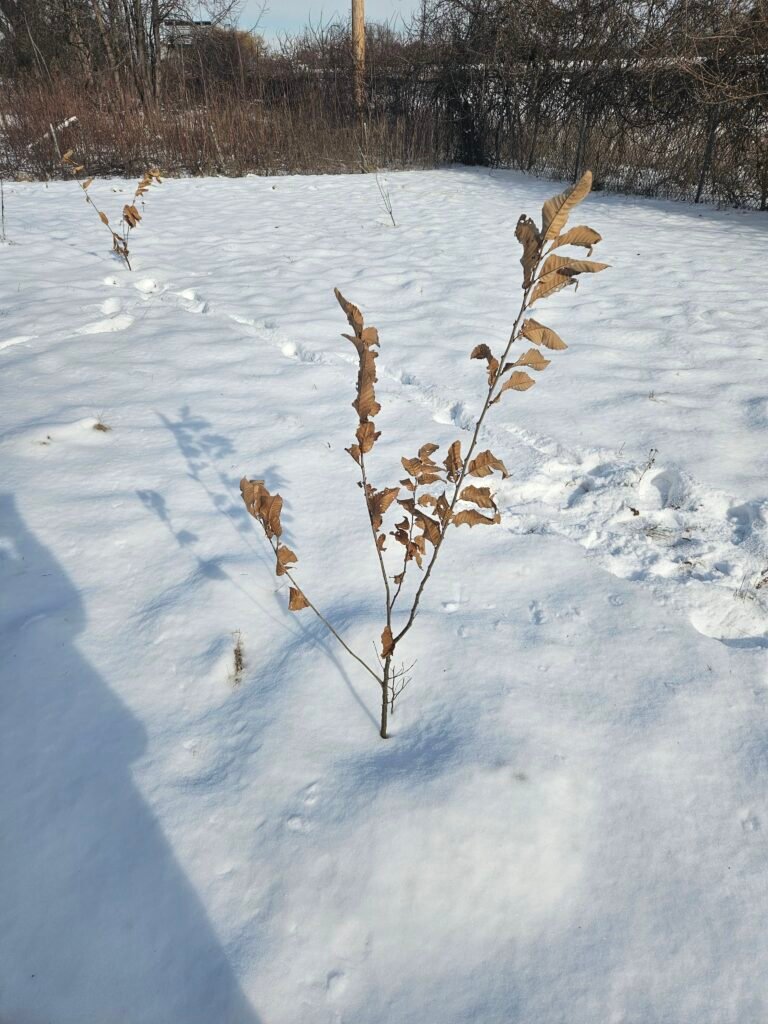
USDA plant hardiness zones are most important for growing perennial species. Because perennials stay in the ground all year, they have to survive the coldest winter temperatures. Different species are more or less cold tolerant, and temperatures below that tolerance will kill your trees, shrubs, and perennial herbs. So, no matter how much I want to grow mangos and avocados in my home climate of 6a, it will never work! On the flip side, some plants require a certain number of cold days to thrive and won’t survive in climates that don’t get cold enough.
When buying trees and other perennials, they should be labelled with their hardiness zone. Compare this zone with the region you live in to see if this species will be a viable option for your garden. It is worth noting, that most species have varieties that are more cold tolerant than others. So, if you live in zone 7, but are dead set on growing figs, you might look into the “Chicago Hardy” or “Azores Dark” varieties, which are more able to survive cold weather.
What Your Plant Hardiness Zone Doesn’t Tell You
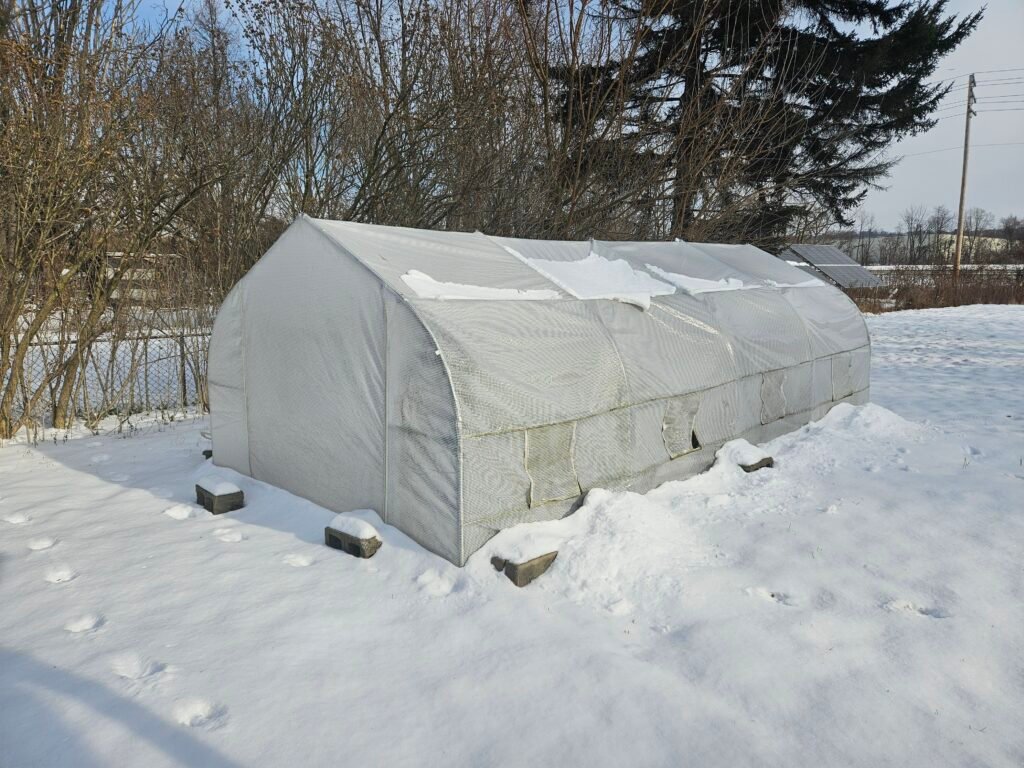
As important as understanding your growing zone is to ensuring the success of your garden, it doesn’t tell you the whole story. Here are some things to consider beyond your USDA plant hardiness zone to help keep your plants alive!
Extreme Temperatures
Remember when we said that the growing zones are based on an average of the low temperatures of the last thirty years? This is important! Just because I live in zone 6 doesn’t mean it will never get colder than -10°F, just that it is unlikely. And while global temperatures are, on average, rising, they are also becoming more chaotic. You don’t want the next polar vortex to be the reason that your newly planted chestnut tree doesn’t survive the winter!
The possibility of extreme temperatures doesn’t mean you shouldn’t grow plants on the cusp of their hardiness zones! Instead, be aware that the plants nearing the edge of their cold tolerance in your region may require a little extra support.
Planting Conditions
Your planting conditions can make all the difference in your plants surviving the extreme temperatures we described above. All things equal, a healthy plant living in its preferred conditions is much more likely to survive a cold snap. Although some of the conditions that will influence your plants’ survival will be outside of your control (extreme temperatures, duration of cold snaps, humidity, etc.) there are many steps you can take to improve the health of your plants and improve their likelihood of survival:
- Light: Make sure plants are placed where they will receive their ideal amount of light. Sunlight will keep plants warm through colder periods, but plants that require partial shade may be harmed by rapid changes in their internal temperature from too much light.
- Soil: Healthy soil makes for a healthy garden! Plants that have ample nutrients and water available in the soil through the year will be healthier and less susceptible to extreme cold. Mulching your perennial plants can also keep the ground warmer and plants happier – like a blanket for their roots!
- Wind Protection: Strong winds create colder microclimates. You can shelter your plants from strong winds with tree tubes or by planting windbreaks around your garden. Hugelkultur beds can create shelter from wind and generate heat through decomposition. Greenhouses are also a great option for creating shelter and increasing temperatures!
- Container Growing: If you plan to grow species that absolutely can’t survive in your growing zone, container growing may be a possibility. This allows you to bring plants inside during the winter to avoid the extreme cold. Obviously this only works for smaller perennial species, so my dreams of mangoes and avocados are still off the table, but my rosemary is doing great!
Annual Plants
You may have noticed that we’ve only talked about perennial plants so far. This is because annuals need to be planted every year and aren’t expected to survive the winter!
Does that mean your growing zone doesn’t matter for growing annuals? Kind of. Although annuals don’t have to survive the depths of winter, they still have their temperature preferences. Most annuals will not survive a hard frost, when temperatures drop below freezing. For annual production, it is more important to know the estimated first and last frost dates of your region. These dates will give you the length of your growing season. Rather than comparing a plant’s cold hardiness to your growing zone, like you would with perennials, you can compare an annual plant’s time to harvest with the length of your growing season. If you don’t have enough days in your growing season for your plant to ripen, you shouldn’t grow it!
Even though your plant hardiness zone doesn’t directly influence your ability to grow the annual crops you want, your growing zone and the length of your growing season will, obviously, be correlated. So, even if you’re just planting annuals, it is still worth it to know and understand your plant hardiness zone.
Learn More
Your best resource for learning about the USDA plant hardiness zones is, of course, the USDA website! This site includes the most recent plant hardiness zone map, and the ability to find your plant hardiness zone by zip code. So, if you’re scratching your head asking “what growing zone am I in?” this should be your next stop!
If you are outside of the United States you can still find your plant hardiness zone! The easiest way is typically to search Google for “[your country] plant hardiness zone map.”
This article has been an introduction to the USDA Plant Hardiness Zones and how to use them. If you have any questions about your plant hardiness zone, send us a message to let us know!

